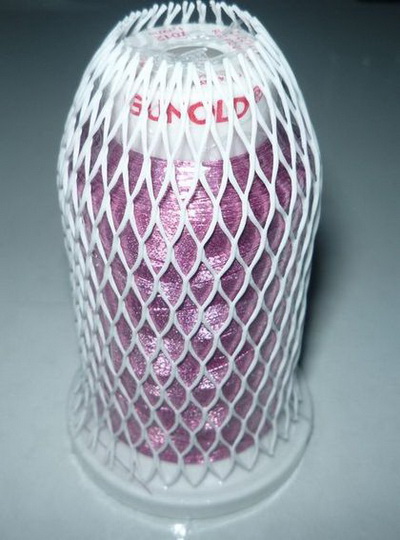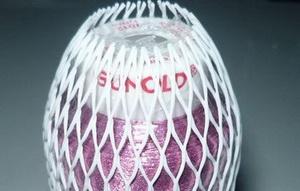Original text by Marina Belova
I really don't know why people think that metallic threads are trickier than rayon or polyester ones. In my opinion, they hold no secrets.
Traditionally, a metallic thread is a nylon or a polyester thread wrapped in a metal foil, which makes the embroidery shiny.
To me, it is much easier to use than ordinary threads. Besides, a metallic thread of a high-quality is more durable and breaks less than, for example, a rayon one. It's only considerable disadvantage is that it is more expensive compared to the ordinary threads.
But the outer look is excellent.
There are several recommendations on working with these threads and creating machine embroidery designs for them.
- To embroider with metallic threads you need to use longer stitches everywhere in the design: in fills, running stitches and underlays. The stitch length should be no less than 3 mm.
- Perhaps, you should also reduce the density of thedesign by 5–15% compared to the default one for #40 threads.
- You can use up to 3 layers in your design.
- #75/11-80/12 needles with large needle's eye are preferable for #40 metallic threads. I don't know ho w such needles on home embroidery machines are called, but there on the industrial machines there fall in a separate category. Schmetz has DBx7ST, for example.
- I've often seen a recommendation to reduce the machine embroidery speed to 700-750 rpm. But if you use a high-quality thread, it works perfectly at 800-900 rpm.
- A metallic thread is prone to twisting, therefore, it would be better to cover a spool with a special net before embroidery. My American colleagues even advise using an ordinary stocking with the toe cut off if you don't have a net. For this purpose, you may also try to tighten the tension.

- Curiously enough, it contradicts the recommendations to loosen up the tension in general. Therefore, you need to do a test piece every time you use metallic threads of a brand you haven't encountered before.
- Also, to prevent twisting, you can run the thread through a piece of foam plastic.
- You need to use a thinner lower thread to match the metallic thread on a spool. For example, Amann Isa 180.
- To avoid excessive thread breakage, use a stabilizer made of natural (cotton) and synthetic (rayon) fibers, like Madeira E-Zee. This will help to reduce friction so that the needle didn't heat up so much.
- You can also use the ordinary wax paper in the hoop together with the stabilizer.
- Not very long ago I came across a hilarious recommendation: deep-freeze your metallic threads several minutes immediately prior to the embroidery. I'll try that one, see if it works in any way. I'm curious.
Anybody who wants to know what effects can be achieved with thick metallic threads, welcome here.



There are no reviews to display.